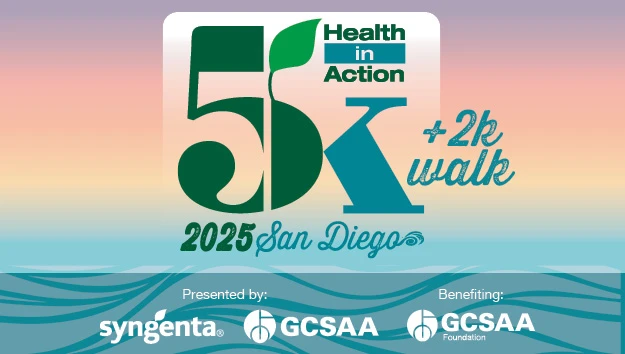|
|
Have you ever given your golf course irrigation system water supply more than just a passing thought? Do you just use your water, or do you actually manage your water? There is a difference. To be more specific: Are you using the water for the purpose of irrigating or are you managing your water by taking charge and care of it? In today’s water environment it is imperative to manage your water, not just use it. Because water management has become such an important issue, the USGA has launched a new initiative regarding water and its management. As part of this initiative, the USGA Green Section agronomists have added an Irrigation and Water Use Efficiency visit to their repertoire of services. During a visit, the USGA representative will document irrigation practices, and discuss a water management plan, use of best management practices and preventive maintenance programs. They will also suggest hiring of specialists (irrigation consultants, irrigation contractors, pond management firms, pump station technicians) where necessary. The USGA also has added a new resource center section to its website titled: “Golf’s Use of Water.” It can be viewed at www.usga.org/water. In addition to having sample best-management plans and case studies, the site covers topics, including but not limited to water conserving grasses, ET for various turfgrasses, deficit irrigation, reclaimed water and cultural practices. The website has several sample drought contingency plans, as well. If you have not prepared a drought contingency plan, you should. Drought management plans, along with best management plans, are an essential part of managing water. The good thing about the website is it’s not limited to just information for golf course maintenance or board personnel. Right on the home page under the “Why Water Matters” section there is an article titled “I Don’t Play Golf: Why Should Golf Courses Get Any Water When Water is Scarce?” The article talks about the three main issues related to water use and conservation that affect golf courses no matter where they are located. The first is energy consumption. Even if water is free, it has to be pumped, so there is always a cost associated with its use. The USGA is not alone in linking energy use with water use. Dr. David Zoldoske, director of the Center for Irrigation Technology at California State University in Fresno, a leading expert on irrigation water use, is fond of saying that “every gallon of water has a kilowatt of electricity behind it somewhere.” The second issue is water quality. It mentions that fertilizers and pest control products need to be properly applied on a golf course to keep them from impacting the environment. The third section discusses how the use of water influences the playability of a course. As we all know, over watering will negatively impact the firmness and speed of the golf playing surfaces. Lastly, additional resources are also provided. The site has a whole set of instructional videos covering various water conservation measures and tips. These include: “Tips and Tools to Reduce Water Use,” “Watering for Healthy Turf” and the “Federal Perspective on Water Use and Golf” by the EPA’s Veronica Blette. All of this information and education is all well and good, but if you are managing your water, then you have to measure it. Many people involved with water, including myself, would argue water that is not measured cannot be managed. How do you mange something when you do not know how much is being used? If you know how much you are using, and where it comes from, then you can make informed decisions based on the collected data. If you are estimating or guessing, you are not being as judicious with your water as you could or should be. Although many courses measure their water use, there are a number – possibly the majority – that do not. Most courses measure because they are required to by regulation or as part of the order of conditions of a water withdrawal permit. This suggests that most water measurement is occurring east of the Mississippi and not in the western part of the U.S., where water rights instead of permitting is the predominate water allocation mechanism. In truth, nearly all golf courses measure their water use through their pump station’s flow meter, which operates the pump station controls. Besides flow, it also measures water use. However, you cannot claim that you measure your water use if you never read the amount of water used or reset the totalizer tracking the overall water use. If you are interested in managing your water, then record your water use daily and tracking it weekly, monthly and annually. You should become familiar enough with your course’s water-use numbers that an anomaly in the numbers will immediately raise a red flag in your mind. If your pump station does not have a flow meter, get one. If you are pumping from just one source of water, then the pump station flow meter will suffice, but if you are pumping from multiple water sources or have one or more make-up water sources (streams, wells, wastewater) for your irrigation water supply, then each of those also need to be measured and monitored. When you look at water management, you need to be aware of, and manage all of, the inputs and outputs on your facility. In some cases, you may also need to monitor/measure surrounding property if it influences your ability to get water. Superintendents, as caretakers of water, monitor, measure and manage their water use. The USGA and other professionals are there to help you.
Brian Vinchesi, the 2009 EPA WaterSense Irrigation Partner of the Year, is president of Irrigation Consulting Inc., a golf course irrigation design and consulting firm headquartered in Pepperell, Mass., that designs irrigation systems throughout the world. He can be reached at bvinchesi@irrigationconsulting.com or 978/433-8972. |

Explore the July 2014 Issue
Check out more from this issue and find your next story to read.
Latest from Golf Course Industry
- PBI-Gordon Company hires marketing manager Jared Hoyle
- Mountain Sky Guest Ranch announces bunker enhancement project
- GCSAA names Joshua Tapp director of environmental programs
- AQUA-AID Solutions bolsters Sunshine State presence
- Escalante Golf acquires secluded Illinois course
- Tartan Talks 105: Nathan Crace and Todd Quitno
- Disease Discussion 24: Let the turf talk to you
- From the publisher’s pen: Foggy intrigue






